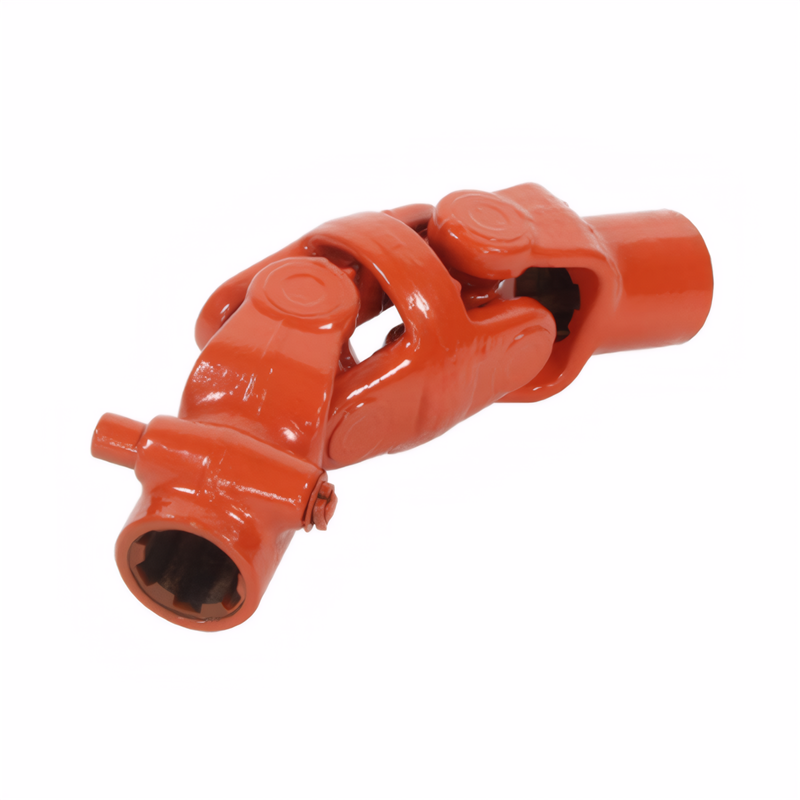The load-bearing capacity of commercial vehicle drive shafts
Load-Bearing Capacity of Commercial Vehicle Drive Shafts
Commercial vehicle drive shafts must withstand extreme torque loads and operational stresses while maintaining reliability under continuous vibration. Their design incorporates specialized materials and structural innovations to achieve optimal load-bearing performance.
High-Strength Material Selection for Heavy-Duty Applications
Modern commercial vehicle drive shafts commonly employ 40Cr or 42CrMo alloy steels that undergo high-frequency quenching to achieve surface hardness of HRC58-62. These materials provide excellent resistance to wear and fatigue while maintaining core toughness. Some advanced designs incorporate carbon fiber-reinforced polymer (CFRP) composites in the outer tube, reducing weight by 58% compared to traditional steel while maintaining equivalent torsional strength.
Material Performance Metrics
- Tensile strength exceeding 1,200 MPa for alloy steel variants
- Fatigue life exceeding 2 million cycles under 800 N·m torque loading
- CFRP components showing 40% better vibration damping than steel
- Operating temperature range from -40°C to 150°C without performance degradation
These characteristics enable drive shafts to handle the abrupt torque changes common in commercial vehicle applications while resisting deformation from repeated impacts with obstacles. The陕汽L3000 medium-duty truck, for instance, employs a three-piece drive shaft capable of withstanding 13,000 N·m of torque—a testament to modern material engineering.
Structural Design for Variable Load Conditions
Commercial vehicle drive shafts feature specialized universal joints capable of handling extreme operating angles. The cross-shaped yokes, typically forged from 20MnVB alloy, maintain radial runout within 0.03mm to ensure smooth rotation. Some designs incorporate ball cage-type constant velocity joints using 16MnCr5 case-hardened steel with 6 groups of φ9.525mm steel balls operating in PAG lubricant, allowing axial displacement of up to 50mm.
Angular Capacity Specifications
- Maximum continuous operating angle: 25-30 degrees
- Peak transient angle capacity: 35 degrees during extreme articulation
- Angular velocity variation: Less than 2% across operating range
- Service life at maximum angle: Exceeds 50,000 cycles without failure
These specifications enable reliable power transmission even when the vehicle's suspension compresses significantly during obstacle negotiation. The EQ1090 freight truck's drive shaft design demonstrates this capability through its optimized cross-sectional geometry that reduces stress concentrations at critical points.
Advanced Manufacturing Techniques for Load Optimization
Precision manufacturing processes play crucial roles in enhancing load-bearing capacity. Computer-controlled balancing machines achieve imbalance levels below 30 g·cm, equivalent to removing a single grain of sand from the shaft's circumference. This level of precision prevents harmful vibrations that could lead to premature failure under load.
Critical Process Controls
- Spline machining tolerance: ±0.02mm to ensure proper fitment
- Universal joint bearing preload: Maintained within 5-15 N·m to prevent backlash
- Dynamic balancing: Conducted at operational speeds up to 6,000 RPM
- Surface finish: Achieves Ra 0.8μm or better to reduce friction-induced wear
The东风天龙旗舰GX tractor-trailer exemplifies these manufacturing standards with its single-piece aluminum alloy drive shaft that reduces weight by 45% while maintaining the load-bearing capacity required for 40-ton gross vehicle weights. This is achieved through a combination of 6061-T6 aluminum tubing and forged steel yokes that distribute stresses evenly across the component.

 The inspection method for the
The inspection method for the
 Symptoms of wear of the univer
Symptoms of wear of the univer
 Analysis of the Causes of Abno
Analysis of the Causes of Abno
 The ability of the drive shaft
The ability of the drive shaft
 简体中文
简体中文 English
English
